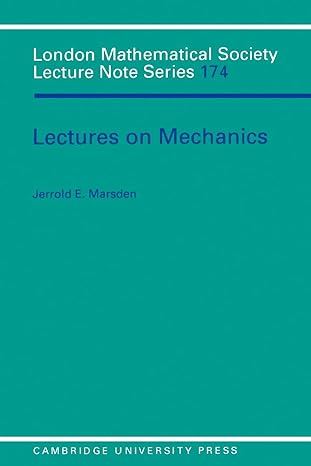Go back


Nonlinear Solid Mechanics A Continuum Approach For Engineering(1st Edition)
Authors:
Gerhard A. Holzapfel

Cover Type:Hardcover
Condition:Used
In Stock
Include with your book
Free shipping: April 13, 2024Popular items with books
Access to 3 Million+ solutions
Free ✝
Ask 10 Questions from expert
200,000+ Expert answers
✝ 7 days-trial
Total Price:
$0
List Price: $48.31
Savings: $48.31(100%)
Book details
ISBN: 0471823198, 978-0471823193
Book publisher: Wiley
Get your hands on the best-selling book Nonlinear Solid Mechanics A Continuum Approach For Engineering 1st Edition for free. Feed your curiosity and let your imagination soar with the best stories coming out to you without hefty price tags. Browse SolutionInn to discover a treasure trove of fiction and non-fiction books where every page leads the reader to an undiscovered world. Start your literary adventure right away and also enjoy free shipping of these complimentary books to your door.
Nonlinear Solid Mechanics A Continuum Approach For Engineering 1st Edition Summary: Nonlinear Solid Mechanics a Continuum Approach for Engineering Gerhard A. Holzapfel Graz University of Technology, Austria With a modern, comprehensive approach directed towards computational mechanics, this book covers a unique combination of subjects at present unavailable in any other text. It includes vital information on 'variational principles' constituting the cornerstone of the finite element method. In fact this is the only method by which Nonlinear Solid Mechanics is utilized in engineering practice. The book opens with a fundamental chapter on vectors and tensors. The following chapters are based on nonlinear continuum mechanics - an inevitable prerequisite for computational mechanicians. In addition, continuum field theory (applied to a representative sample of hyperelastic materials currently used in nonlinear computations such as incompressible and compressible materials) is presented, as are transversely isotropic materials, composite materials, viscoelastic materials and hyperelastic materials with isotropic damage. Another central chapter is devoted to the thermodynamics of materials, covering both finite thermoelasticity and finite thermoviscoelasticity. Also included are: * an up-to-date list of almost 300 references and a comprehensive index * useful examples and exercises for the student * selected topics of statistical and continuum thermodynamics. Furthermore, the principle of virtual work (in both the material and spatial descriptions) is compared with two and three-field variational principles particularly designed to capture kinematic constraints such as incompressibility. All of the features combined result in an essential text for final year undergraduates, postgraduates and researchers in mechanical, civil and aerospace engineering and applied maths and physics.
Customers also bought these books
Frequently Bought Together
Top Reviews for Books
Sara James
( 5 )
"Delivery was considerably fast, and the book I received was in a good condition."










